Introduction
To everyone's surprise, LSS once again updated their Banned and Restricted list. In fact, they banned a specific card from Classic Constructed.
From January 31st onward, the following card is banned in Classic Constructed:
The Hunted and Ira
In a few days, Flesh and Blood's new set, The Hunted, will be released and most definitely turn the metagame upside down! One of the classes that will benefit the most from this set will be Ninjas, particularly Fai, Rising Rebellion. However, some old Ninja cards apparently got a lot more support from this set than we expected.
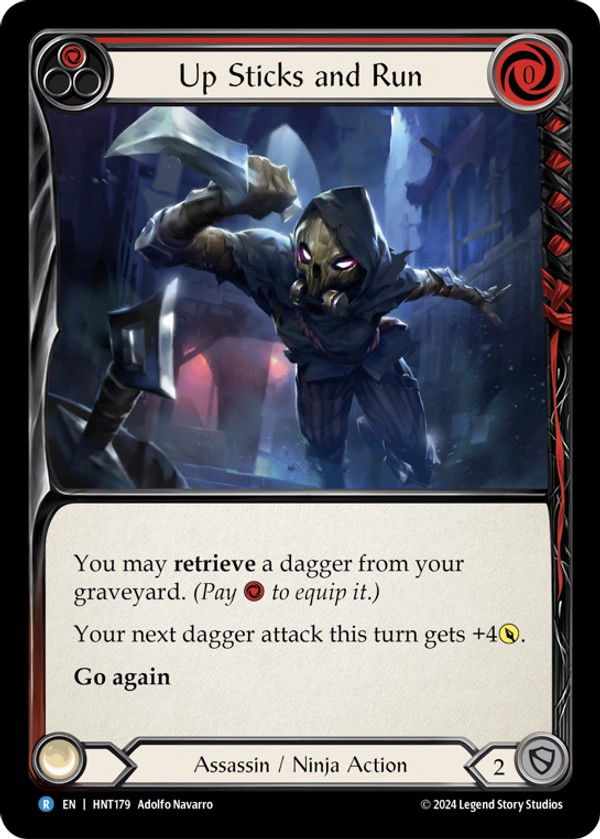
Retrieve will give Ninjas the ability to equip broken daggers one extra time. This means this class will be able to use cards like Flick Knives with a bit more freedom. However, there is one dagger that no longer has a drawback precisely because of Retrieve: Zephyr Needle.

This dagger is incredible: its go again isn't conditional, and it costs one and has 2 power, but its last ability (which breaks it) is quite relevant, and many players didn't use it on their heroes because they didn't think it was worth it. We've seen it before on Zen, Tamer of Purpose when he mostly played explosive turns, but it only truly got back into the competitive scene with Ira, Scarlet Revenger. It appeared in her sideboards and was great against decks that don't play defense reactions.
With The Hunted, Ira would become even more powerful. A few new cards from this set would buff it (as well as Ira's ability) and make it impossible for you to destroy it, but also its drawback would be nonexistent. And, if you did manage to destroy it, Retrieve would get it back. Considering that and the fact Road to Nationals is close, LSS decided to ban this weapon and avoid any issues.
Rule Changes
Not as important as this ban were two game rule updates. Let's see them and understand what they will change in practice.
How Does a Flesh and Blood Turn Works
Most FaB players know how to play a turn at a very basic level. But there are a few details about FaB turns that many don't pay attention to because their hero doesn't interact with these details. To understand these changes, we need to understand how a turn works in Flesh and Blood.
Here's how a Flesh and Blood turn looks like, in order:
- Start of Turn (some triggers resolve at this phase, and neither player has priority);
- Action Phase (the active player has priority);
When you play an action or an instant, your opponent has priority, and, when they pass the priority again, the card in question resolves.
If either of you use an attack action or an attack ability, a combat chain opens and includes the following steps:
- Layer Step: when the attack is on the stack. Players gain priority;
- Attack Step: the attack is considered active and a chain link forms. Players gain priority;
- Defense Step: the opponent declares how they'll defend themselves from the attack in question. After they declare which cards they want to play, players gain priority;
- Reaction Step: the moment the active player uses their attack reactions and the defending player uses their defense reactions. Both have their own priorities;
- Damage Step: when you calculate how much damage each player took if they did. Neither player has priority;
- Resolution Step: when on-hit effects happen (for instance, drawing a card with Snatch (1)) and the chain link resolves. Players have priority;
- Link Step: when go again resolves (the player gets 1 action point) if the attack in question has go again. Players have priority. If the player attacks again, the turn goes back to the Layer Step and goes through all the next steps;
- Close Step: if either of you play a non-attack action or the attacking player declares they want to close the combat chain, you'll go to this step. All permanents that blocked (in this case, equipment) return to their places, and all cards used in the combat chain go to the graveyard. At this point, neither player has priority.
And that's how a turn plays out until the active player declares they're moving to the End Phase (when you build your arsenal, the cards you pitched go to the bottom of your deck, and you get new cards). If your opponent doesn't want to play anything, the End Phase is complete and the turn is over.
That's a brief summary of what a turn in Flesh and Blood looks like. Now that we know all of this, let's see what changed.
Rule Changes in Some Phases
The latest changes involve three steps in the chain link: Damage Step, Resolution Step, and Link Step. As soon as The Hunted is out, these changes are officially valid:
- The Link Step no longer exists;
- The Damage Step now gains priority, and on-hit effects happen in it (before, they happened in the Resolution Step);
- The Resolution Step still resolves the chain link, but now it also resolves go again (before, this happened in the Link Step). Both players still have priority.
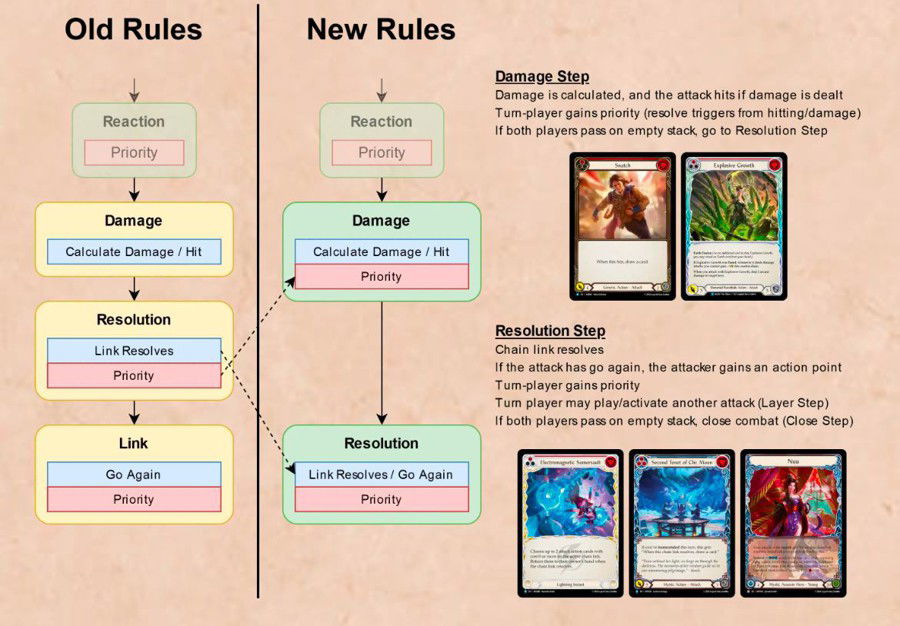
For most heroes, these changes will be irrelevant. Overall, these changes will only simplify the chain link and "shrink" a few steps.
However, some cards and heroes will be impacted by these changes. We won't discuss every card, but the most significant was Electromagnetic Somersault.
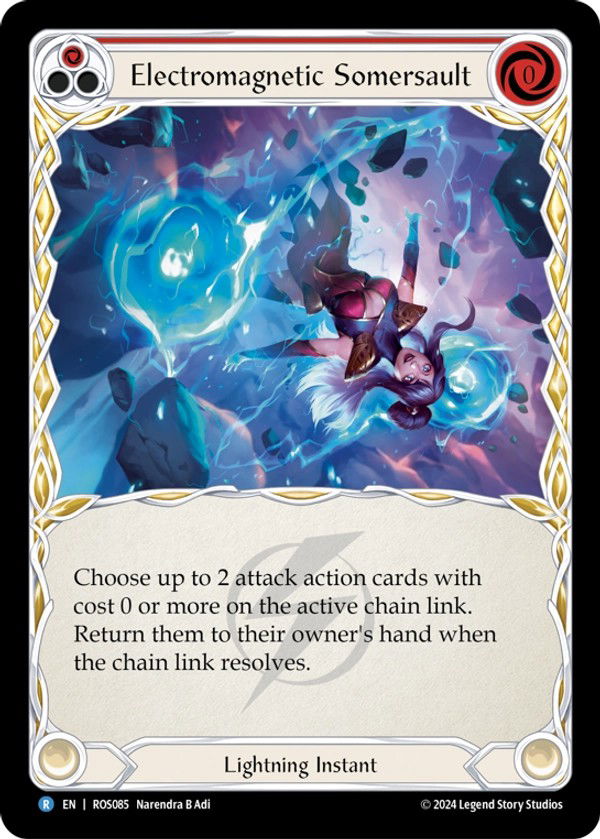
This instant is a bit complicated, but, to sum up, it returns up to two attacks that cost zero or more (considering the red version) to your hand (either attacking or defending) after the chain link resolves - this means these cards will return to your hand in the Resolution Step.
Before, the last chance you had to play this instant and use its effect was in the Reaction Step, as that was the last moment both players had priority before the Resolution Step. Keep in mind that no one has priority in the Damage Step.
In other words: you could play Electromagnetic Somersault in the Resolution Step, but nothing would happen, considering the chain link would already be resolved.
However, now, after these new rules, the Combat Step has priority, and lets you play this instant right then before the chain link resolves.
But what difference does this make?
Let's see an example:
Nic is playing Aurora, Shooting Star, has a Channel Lightning Valley in play and is attacking Tyler with a Fry. Tyler declares no blocks and no reactions. Channel Lightning Valley's effect kicks in and Nic draws an Electromagnetic Somersault.
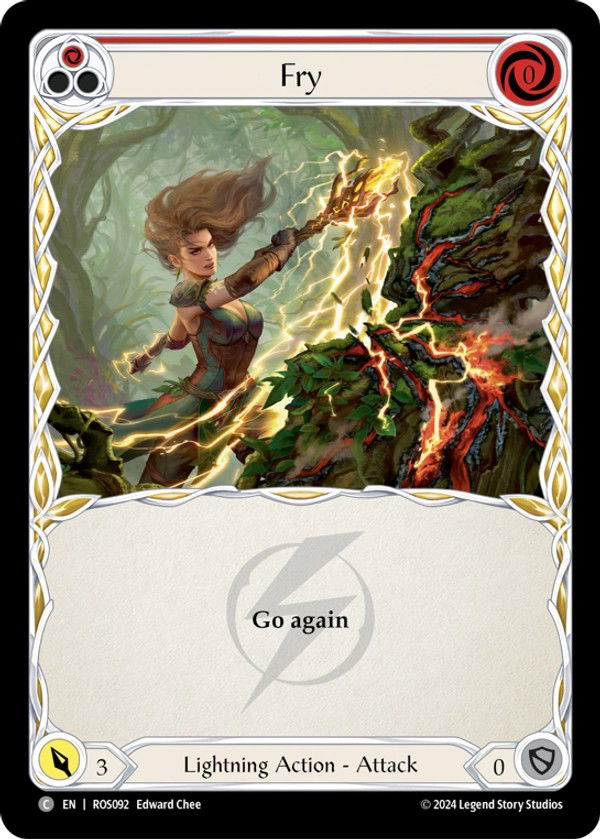
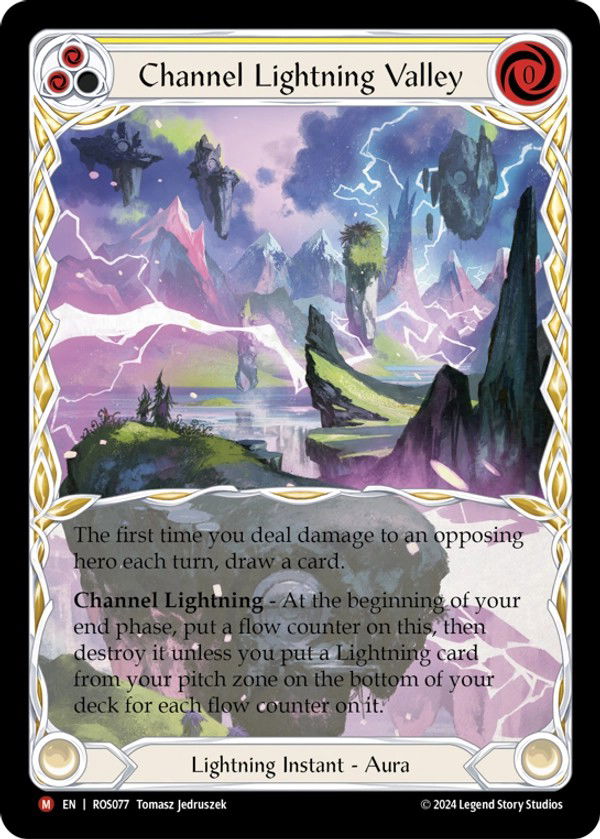
Before, as on-hit effects happen at the Resolution Step, the chain link is resolved, so, if Nic plays Electromagnetic Somersault targeting Fry, nothing will happen.
But, what about now?
As on-hit effects happen at the Damage Step and it now has priority, Nic can play the instant they just drew in this step before the Resolution Step, use its effect, and return Fry to their hand.
To sum up, now you have a window to play this instant after calculating damage and before the chain link resolves.
This change will affect this card the most, but it will also affect other cards. Nuu, Alluring Desire and Second Tenet of Chi: Moon will also be affected. Another side effect is that on-hit effects happen before any resolution effects on the chain link happen, so weird interactions with cards like Wager, for instance, no longer exist.
Naming Cards
Another simpler change is the rule regarding naming cards.
Some cards, like Censor (1) or Mask of Many Faces, tell you to name a card. So far, you could only name cards in the format that you were currently playing. This means you couldn't name cards that weren't legal because of their rarity (like Commoner) or banned cards.

Now that Bonds of Ancestry (1) is banned from Classic Constructed, the Dishonor combo is impossible, and, consequently, one of Katsu, the Wanderer's strategies is entirely useless. Even with the new card, Retrace the Past, we couldn't name banned cards because of the rules.
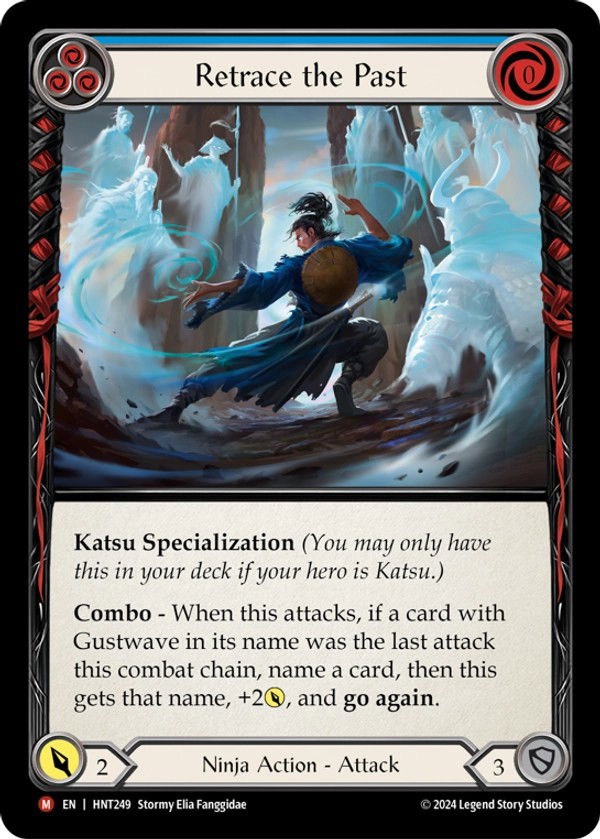
To make this new card work and try to bring back Katsu, the Wanderer with this combo, now you can name any Flesh and Blood card ever printed, including banned cards. So the Dishonor combo is once again back, as well as many others!
Final Words
We're now in a new competitive season with The Hunted, so LSS simply needed to straighten a few things out. This way, we'll be able to play this new set without any bigger issues. Ira will still be one of the best decks in the game even after this unexpected ban, but it won't necessarily be unbeatable.
What about you? What did you think of these changes? Tell us your thoughts in our comment section below!
Thank you for reading, and see you next time!








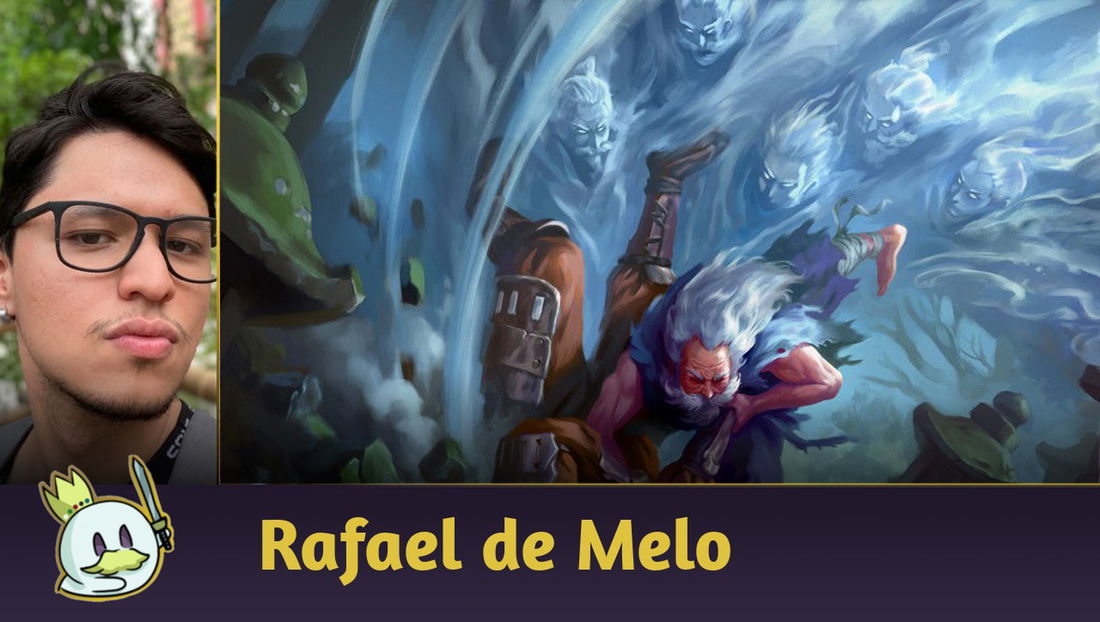
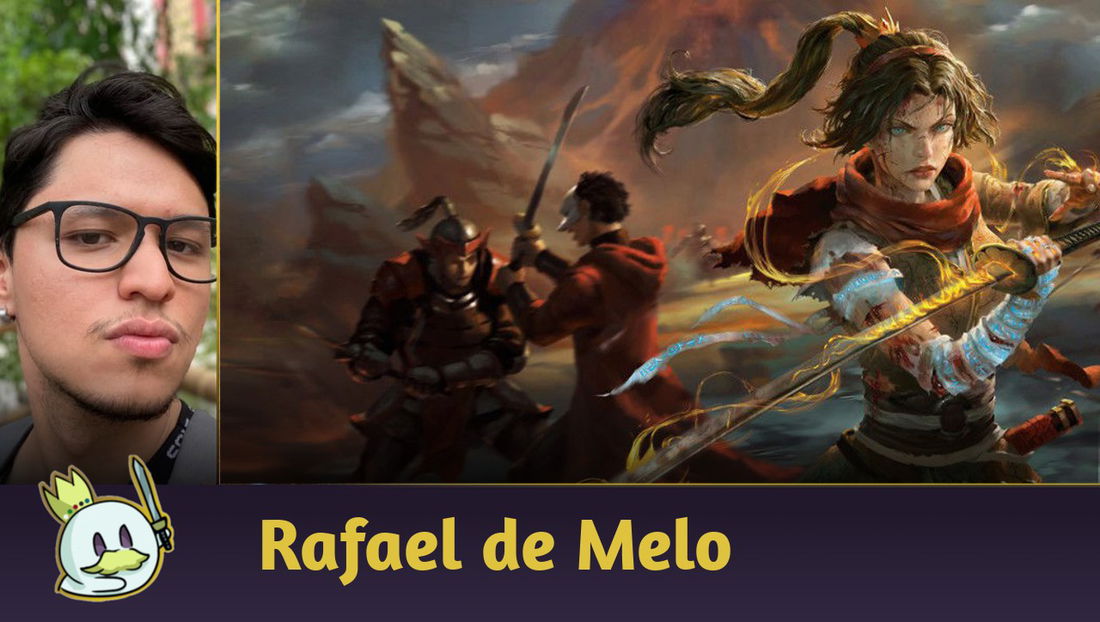



— Kommentare 0
, Reaktionen 1
Sei der erste der kommentiert